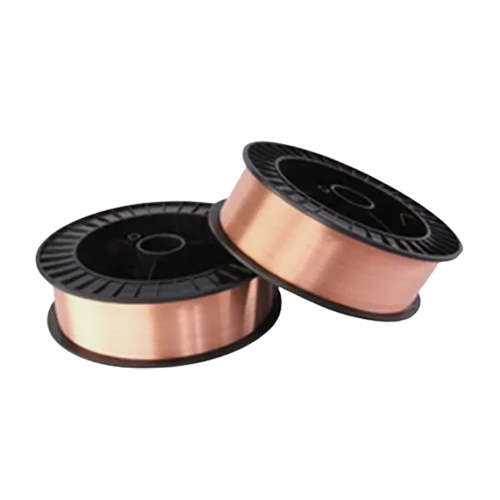TIG/MIG Wires
Home - Electrodes Division - TIG/MIG Wires
TIG/MIG Wires
MIG welding is also known as metal inert gas welding. The name inert gas relates to the fact that the arc does not react with oxygen in the atmosphere. The electric arc is surrounded by a shielding gas, which prevents it from acting outside its designated area. This gas contributes to MIG welding's improved safety. TIG refers to tungsten inert gas welding. This electrode is a consumable metal used as filler in MIG welding. Tungsten, on the other hand, does not melt as quickly as other metals and generally transmits the arc of energy to the items to be joined.


MAITRI METAL (P) LIMITED is a premier channel partner specializing in MIG and TIG welding wires from India, distributing our products globally. We offer core wires in various grades, cut lengths, and coil shapes to meet diverse customer needs, with customizable lengths and packaging options tailored to exact specifications. Leveraging our unique core wire manufacturing techniques, we assist electrode makers in meeting their flux requirements and improving weldability for end customers
Key Features of Welding Electrodes
- Composition : MIG and TIG wires are made from various materials, including carbon steel, stainless steel, aluminum, and other alloys, to match the base metal being welded.
- Diameter and Length : Available in different diameters and spool sizes to suit various welding applications and equipment.
- Shielding Gas : MIG wires require an external shielding gas, such as argon or a mixture of argon and carbon dioxide, to protect the weld pool from atmospheric contamination. TIG wires do not require shielding gas as the welding process relies on a separate shielding gas supply.
- Filling Material : MIG wires serve as filler material, adding material to the weld joint to create a strong bond between the base metals. TIG wires, on the other hand, are non-consumable tungsten electrodes used to create the arc in the TIG welding process.
- Versatility : Both MIG and TIG wires offer versatility, allowing for welding in various positions and on a wide range of materials, including carbon steel, stainless steel, aluminum, and exotic alloys.
- Weld Quality : When used correctly, MIG and TIG wires produce high-quality welds with minimal defects, such as porosity, undercut, and spatter.
- Ease of Use : MIG wires are relatively easy to use and are suitable for both novice and experienced welders. TIG welding requires more skill and precision due to the manual control of the torch and filler material.
- Applications : MIG and TIG wires find applications in industries such as automotive, aerospace, construction, manufacturing, and fabrication, where high-quality welds are required. They are used for various purposes, including joining, fabrication, repair, and maintenance.
| Carbon Steel | ER70S-3, ER70S-6, ER80S-D2 |
| Stainless steel | ER308/ER308L, ER316/ER316L, ER309/ER309L, ER347 |
| Low alloy High Tensile | ER80S-D2, ER90S-B3, ER100S-1 |


